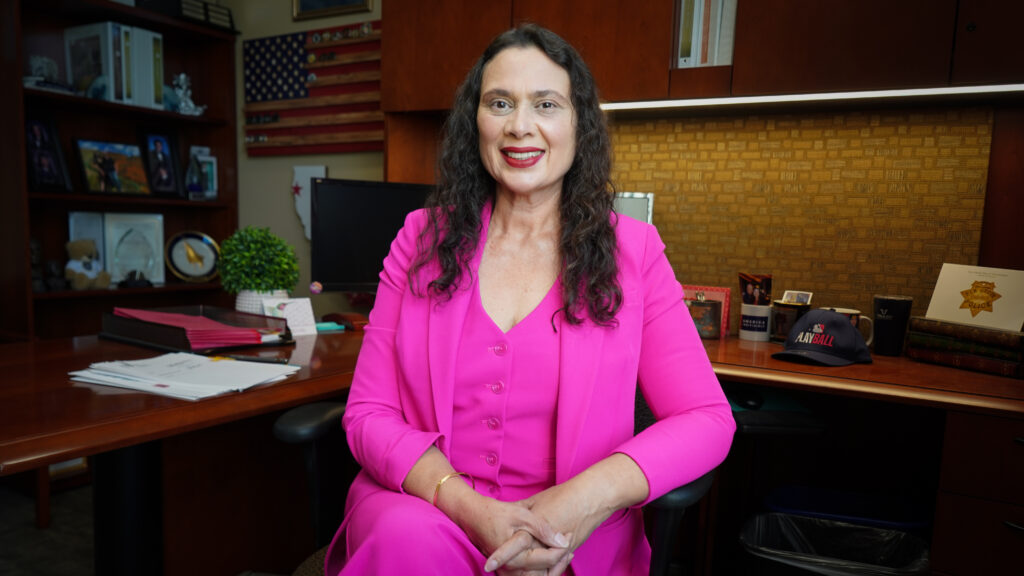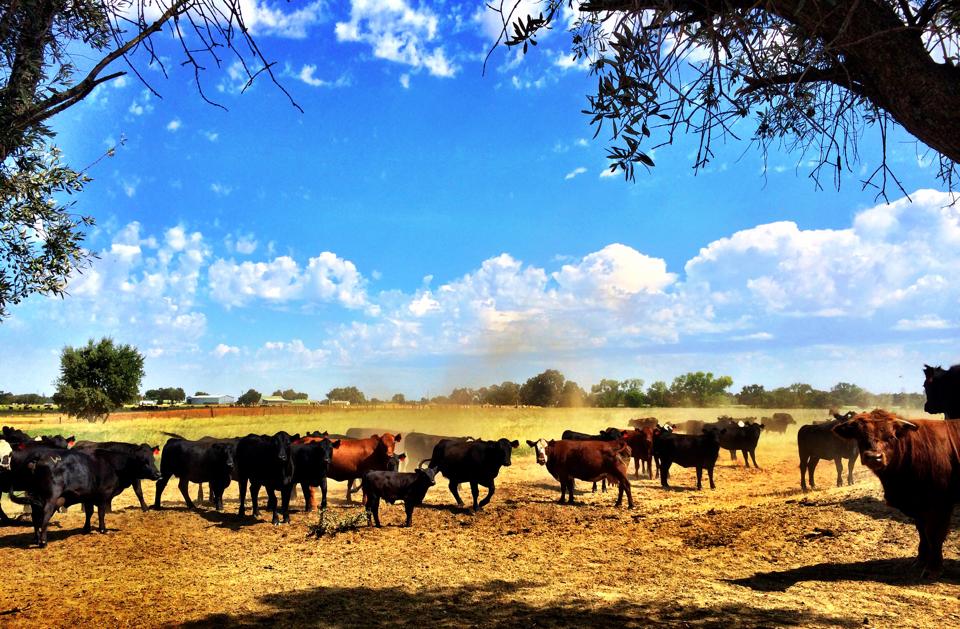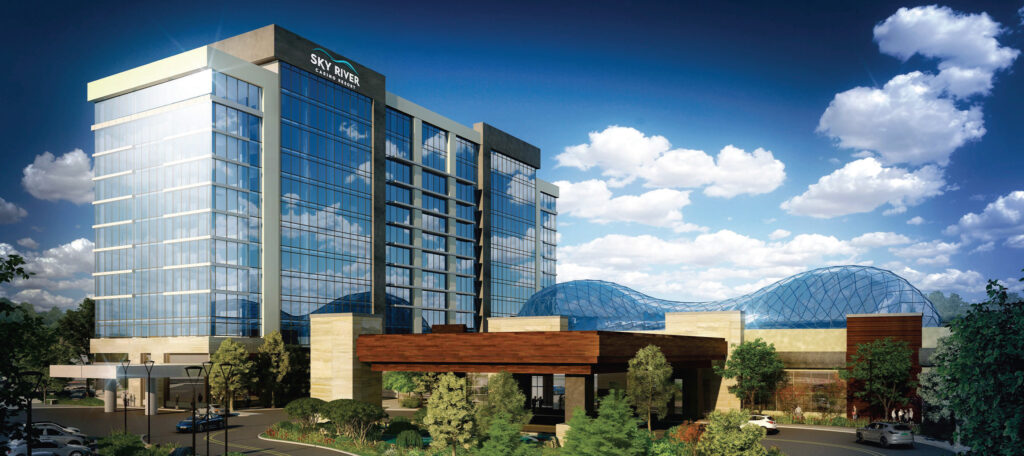The Abridged version:
- The city of Elk Grove turned 25 this year, and it continues to experience rapid growth and navigate the challenges that growth brings. Elk Grove’s population has swelled from 76,000 to more than 170,000 since incorporation.
- Residents praise the city’s diversity and cohesion, and many say they moved there for the schools and relatively safe environment. Yet the mayor wonders if her adult sons will be able to afford homes there.
- Thousands of acres of agricultural and ranch land have been converted to residential, commercial or industrial uses, often infuriating farm and environmental advocates.
Terri Isedeh, who grew up in Sacramento, remembers her father hunting ducks and pheasants in Elk Grove, a place just 15 miles south, “that was nothing but fields and land.”
Now 62 and a 20-year Elk Grove resident, Isedeh is like a lot of people in this rapidly growing city: worried about the traffic congestion new development can bring — in her case, a new Dignity Health hospital on Elk Grove Boulevard — but still rooted in and fond of the place she calls home.
“What I love about Elk Grove is it’s a close-knit community,” she said. “The neighbors are neighborly. There’s always something to do. And it’s very diverse. I love that.”
From fledgling to flourishing
Tired of having too little say in Elk Grove’s affairs, voters approved city incorporation in 2000 after two failed attempts. The city’s new leaders struggled at first amid the region’s rapid growth. The city and the Cosumnes Community Services District were at odds, conflicts of interest plagued city services contracts, and frustrated citizens felt left out of the decision-making process.
“It was a perfect storm,” said Pat Hume, a former city Planning Commission member, City Council member and now a county supervisor. “It’s a complicated situation. Part of it is land use, part of it is economics, and generations of families. It’s about managing it and controlling it in a way that is measured, logical and sustainable.”
Twenty-five years later, Elk Grove is in a balancing act. It faces ongoing concerns about the pace of growth, the loss of farmland and climbing housing costs. Still, new residents continue to arrive, developers continue to build, and unlike some other midsize cities in the region, its city coffers are full — for now.
“People move here for the high quality of life,” said Elk Grove Mayor Bobbie Singh-Allen. “We have one of the best school districts. It’s a safe community. We have great parks, so of course, you want to be part of this place.”
On a recent Saturday morning, Terry and Jessica Truong and their 3-year-old daughter, Ameera, strolled the farmers market in the Laguna Gateway shopping center parking lot, checking out heaps of green beans, butternut squash and freshly picked persimmons. The weekly outing has become a habit for the young family since moving from the Bay Area a year ago. Leaving Richmond for Elk Grove made sense, they said, for three reasons: more space, their daughter’s education and the city’s diversity.
“Elk Grove has a balance,” said Terry Truong, an engineer. “It’s a small city. It’s a little more quiet, and it has many different kinds of people.”

A city of immigrants
Based on U.S. Census data, Elk Grove was the fifth most diverse midsize city in the U.S. About 35% of residents are white, 32% are Asian, 19% are Latino, and 11% are Black. Most of its immigrant settlers come from Asia, including Afghans, Chinese, Filipinos, Indians and Vietnamese.
They include Nhu Nguyen, who arrived in 2009 as an international college student and met her future husband at Sacramento State University. The couple bought a home in Elk Grove near Nguyen’s relatives, who fled Vietnam by boat in 1975, and across the street from the school the couple’s children would later attend. Nguyen’s parents and younger siblings emigrated to join the family a few years later.
“We stayed in the same neighborhood, walking distance from one another. So far, it works so well for us. We got a house when the market was really low. We are debt-free.”
City leaders see diversity as a strength and point of pride. “A City Welcome to All,” exclaims the mural greeting visitors to City Hall, with the word “welcome” written in more than 30 languages. A world map dotted with pins and strings highlights the diverse heritage represented by the city’s employees.
Singh-Allen is the first directly elected Sikh female mayor in the country. One of her mentors is U.S. Rep. Ami Bera, an Elk Grove resident whose parents were Indian immigrants.

Epic population growth
Bera and his wife moved from San Francisco to Elk Grove 30 years ago during a period of accelerated residential growth and the push for cityhood. Still, he said, the suburb felt rural.
“You could go for a walk at night, and you could smell the cows, hear and see them. Everything to the south was agricultural and dairy land.”
Rep. Ami Bera
Since incorporation, Elk Grove’s population has swelled from 76,000 to more than 180,000 today; between 2004 and 2005, it was the fastest-growing city in the country. And thousands of acres of agricultural and ranch land have been converted to residential, commercial or industrial uses, often infuriating farm and environmental advocates.
“The land grab has eaten up the ranches and people I grew up with. They have had to move on,” said 63-year-old Walt Hardesty, who raises cattle and grows hay on several hundred acres in south Elk Grove. Hardesty, who is Sacramento County Farm Bureau president, won’t even go into Elk Grove anymore because “it’s a traffic nightmare” and vows to stay put on his property “until they shovel dirt on me.”
Fearing the loss of habitat, Friends of the Swainson’s Hawk was formed 31 years ago and has fought expansion efforts to protect the threatened species. The majestic raptor primarily inhabits the Central Valley, foraging for rodents in alfalfa and other crop fields and nesting in nearby trees. The group has argued that Elk Grove has not done enough to protect the hawk and that agriculture and tree loss have led to a decline in the hawk population. The organization, along with the Environmental Council of Sacramento and other groups, has sued the city more than once, seeking to halt development that fails to adequately mitigate habitat loss.
Another example of growth tension played out in recent months in the city’s southern reaches, where community members tried unsuccessfully to block the development of a Maverik fueling station that attracts large trucks. Opponents said the 25-bay station would bring even more traffic and breed crime. The council upheld the Planning Commission’s approval of the project.

New partners and great expectations
Elk Grove had worked for years to lure the Sacramento Zoo to Elk Grove, but a bid that failed last spring was due to insufficient funding. Mayor Singh-Allen is disappointed but undeterred.
“We are very mindful of bringing a civic amenity to our city that our residents and the region will be proud of,” she said. “What that is yet to be determined.”
“It would be a great place for a cricket stadium,” mused Bera. Other ideas include an amphitheater or other regional entertainment venue.
Nearby, another organization has established an expansive foothold in Elk Grove: Wilton Rancheria, a tribe that lost federal recognition in 1959 but regained it 50 years later. The tribe selected Elk Grove, part of its ancestral territory, as the site for Sky River Casino, which opened west of Highway 99 in 2023.
“It was easy to choose Elk Grove,” said Jesus Tarango, the tribe’s chairman and CEO, citing its location right off the highway. “Elk Grove is still growing. For us, we could put our energies together with the city and grow with each other.”
And grow they are. With the addition of a parking structure, a hotel resort with an atrium, a spa and a convention center, Sky River Casino will double in size and grow its workforce to 2,500, becoming one of the largest employers in the city by the close of 2027. To help offset some of the impact, the Rancheria recently donated $1 million to the city. Earlier this month, the city erected a tribal flag outside City Hall.
Now the majority owner of the Republic FC soccer team, the tribe continues to acquire land in Elk Grove for future uses — both for Wilton Rancheria and the broader community.
“You will have some landmark venue,” Tarango predicted, “something to stand out for our city. My nation, and the Community Services District, are prepared to bring something like that to our area.”

A balancing act
With land values and housing costs rising, maintaining Elk Grove’s small-town vibe while making it a destination city has become increasingly complex. Farmers often feel compelled to sell their land, said Hardesty, and even Singh-Allen wonders if her adult sons will ever be able to buy homes in Elk Grove, where the median home price is $645,000. The city settled a lawsuit filed by the state for rejecting an affordable housing project in the city’s historic district and relocated the units to Elk Grove-Florin Road. A handful of other projects are planned.
To combat congestion, the city has invested in a sophisticated traffic light synchronization system, and a new interchange at Whitelock Parkway and 99 is planned, along with future alternate routes and transportation modes into and out of the city. The Elk Grove Unified School District, which extends beyond Elk Grove’s borders, plans to build 60 more schools for the children of families moving into new developments — fueled by bond measures approved by voters.
County Supervisor Hume, a resident since 1977, takes a holistic view.
“People complain about traffic, development, crime and homelessness — whatever seems to be bubbling up,” he said. “But Elk Grove seems to be trying to control outside forces to mature into a high-functioning jurisdiction.
“Generally, people in Elk Grove are pretty happy.”

Dorsey Griffith is a Sacramento-based freelance writer.